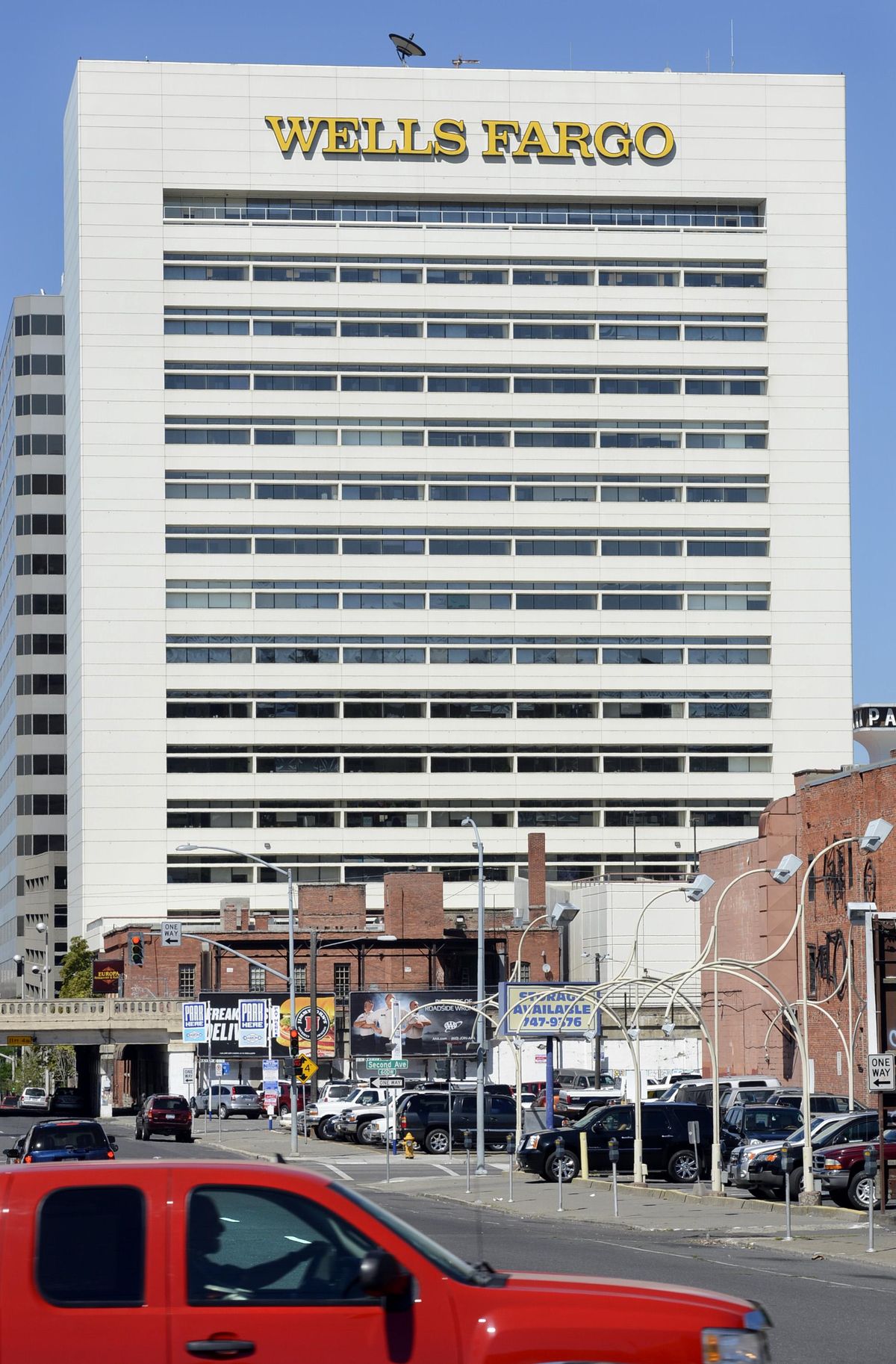Washington Trust to buy downtown Spokane’s Wells Fargo building

Washington Trust Bank is purchasing the 18-story Wells Fargo building in downtown Spokane.
The purchase price of Spokane’s second-tallest building was not disclosed, but the 37-year-old structure is assessed at $21 million, according to the Spokane County Assessor’s Office.
The sale, which will be completed in April, marks the second sale of a major downtown building in four months – the two buildings are the tallest in the region. In December, the Bank of America Financial Center Building at 601 W. Riverside Ave., was purchased for $47.7 million by the Canada-based Redstone Group. The building, the tallest in Spokane, is assessed at $38.8 million.
The Wells Fargo Center building, 601 W. First Ave., has been owned by Inland Northwest Health Services since it acquired it in a foreclosure sale in 2012. INHS is the building’s largest tenant, occupying 45 percent of its space. Over the next three years, INHS will move to another location.
Other tenants include Shell Energy, Visit Spokane, Spokane Arts, Potlatch Delta Corp., Cornerstone Home Lending and Providence Health Care Foundation.
The name of the 192,000-square-foot building will not change, but it is unclear if Wells Fargo will remain in the building.
Washington Trust, which owns numerous buildings downtown, plans to occupy a portion of the building but will retain and continue to occupy its namesake building on Sprague Avenue.
“We have grown significantly in recent years, and our downtown headquarters are no longer large enough to house all of our Spokane-based employees,” Peter Stanton, Washington Trust chairman and CEO, said in a statement. “We have a strong culture, and we believe that bringing everyone together will help maintain that vibrant culture while also offering our employees Class A office space in downtown Spokane.”
Like the Wells Fargo building, the Washington Trust Financial Center, the bank’s headquarters, is at the intersection of First and Wall Street, but fronts Sprague. The bank also owns an operations center at Post Street and Second Avenue, where it spent $1.65 million on a renovation last year.
The bank did substantial demolition on the old Ridpath Motor Inn, another of its downtown buildings, taking off its second through fifth floors. It purchased the building, referred to as the Ridpath Annex, in 2014 for $2.6 million. At the time, the bank said it purchased the structure as a future home for its 485 workers who work downtown.
Washington Trust Bank was founded in 1902 and is based in Spokane. The bank lists assets exceeding $6 billion, has 43 branches and offices in Washington, Idaho and Oregon and employs 970 people.
When the Wells Fargo building was constructed in 1982 it was called the Farm Credit Bank Building. It had a popular restaurant on the top floor.
In 1998, Metropolitan Mortgage and Securities bought the building for $11.7 million. The company went bankrupt in 2004, and hotelier Walt Worthy bought the building and renamed it the Wells Fargo Tower after landing the national bank as its anchor tenant.
The tower replaced what was called the Merriam Block, which was developed in 1916.
Northern Pacific had completed the elevated railroad viaduct in 1915, making apparent that Railroad Avenue “ceased to exist” and the buildings fronting the road “were a mistake,” according to Robert Hyslop in his book “Spokane’s Building Blocks,” about downtown buildings. The Merriam Block turned that frontage around to face First.
In 1921, a lumberman named William Kroll bought the building for $250,000, and it was renamed the Kroll Building. For a few years, it housed the Kroll Public Market and then, for decades, various business schools.
In the 1930s and ’40s, the building was also home to the Women’s Athletic Club, a philanthropic group that boasted 600 members. Still later, a “blueprinters,” a radio parts store and the Hollenback Piano Co. were tenants, but by 1970, the building was largely deserted.
During the 1970s, the informal “Second City” shopping mall took over the building with little shops, restaurants and a succession of theaters beginning with the New Bijou Cinema.
The building was demolished in June 1980 “as if a disease were spreading,” Hyslop wrote, noting the buildings on the two blocks immediately north of it were also razed. He wasn’t impressed with the still-standing buildings – the Wells Fargo and Bank of America buildings, and a parking structure – that were constructed.
“The disease had spread, resulting in three great undistinguished tall structures filling these three blocks in the center of town,” he wrote.